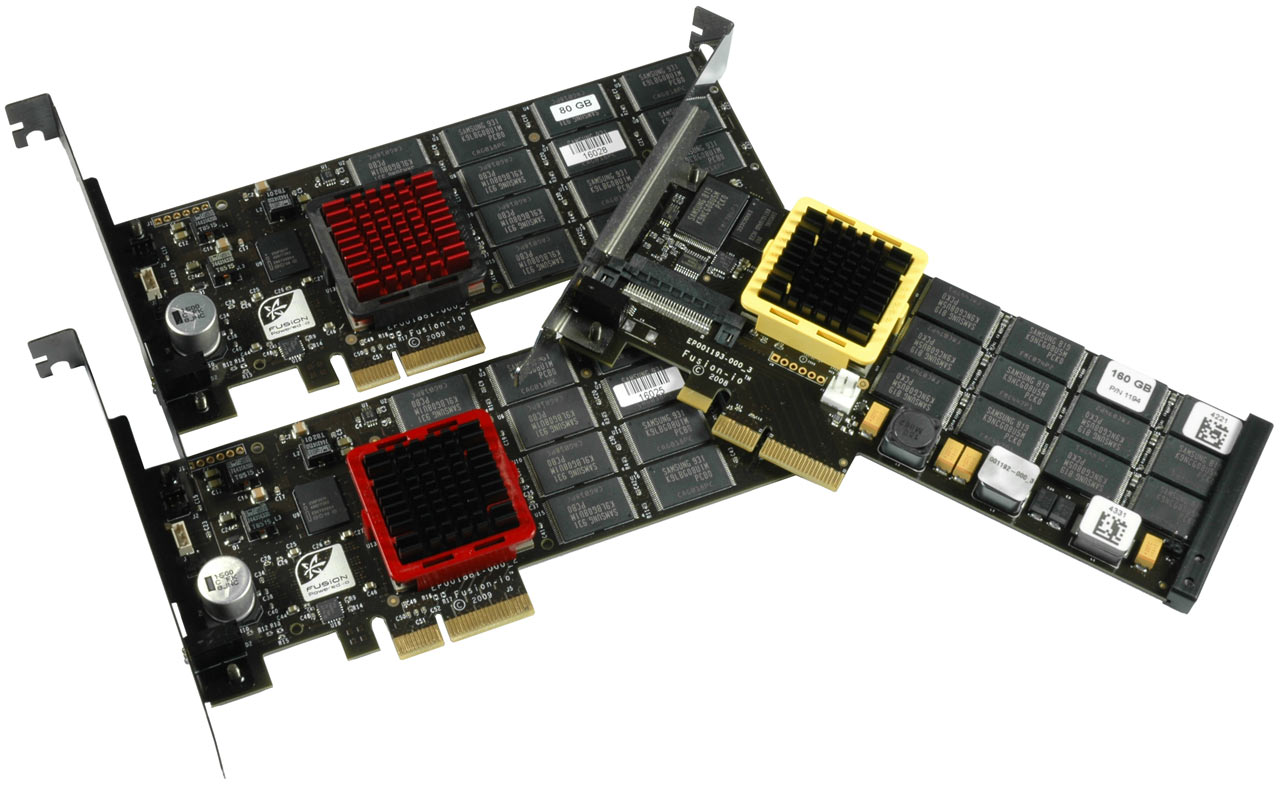ioXtreme PCI Express SSDs Anticipate SATA 6 Gb/s Performance
Is Fusion-io Ready To Go Mainstream?
We looked at Fusion-io’s ioDrive in early 2009. The device plugs into a PCI Express slot and offers 80, 160, or 320GB of storage at formidable performance levels. Unfortunately, the ioDrive is rather expensive, meaning still way beyond the $1,000 mark. But Fusion-io has something new that aims at the high-end enthusiast market without sacrificing too much performance. The ioXtreme is limited to 80GB for now, but you can link several ioXtremes if you go for the Pro version. Amazon sells the 80GB base model for $895.
Flash SSD Development
Flash-based SSDs have seen quite a remarkable development in a relatively short time. Although the first drive generations were already faster than hard drives on most read operations, write performance was slow. Many products didn’t live up to their power efficiency expectations. In fact, many SSD required even more power than hard drives (don’t miss our update article on this point, as well). However, milestones like Intel’s X25-M and Samsung’s PB22-J, along with many drives based on Indilinx controllers (all of which utilize cache and command queuing), redefined SSD storage by delivering higher and more constant performance.
We performed a workload analysis way back in April, and our most recent flash SSD roundup proves that there is now a variety of fast and efficient products available. The latest product generation also supports the TRIM feature now supported in Windows 7. TRIM isn’t an imperative feature, but we still highly recommend it if you want to maximize your SSD’s performance. TRIM makes the SSD aware of erased blocks, reducing the need to call tedious write processes if only small data chunks need modification. SSDs always have to execute the full cycle of read, erase, modify, and write for write operations. This has to be done in large chunks, even though a write may only affect 4KB. More and more SSD vendors offer firmware updates to enable this TRIM capability.
Professional SSDs are Different
This sums up the consumer-oriented SSD market, but the professional market is entirely different. Here, it’s important to talk about the differences between MLC and SLC flash. MLC stands for multi-level cell; SLC means single-level cell. SLC stores one bit per flash cell while MLC can store multiple bits. MLC offers higher storage densities, and hence lower cost. But it requires much more time for writes. As a result, enterprise-class SSDs are typically based on SLC, while all of the consumer SSDs mentioned above utilize more affordable MLC flash. SLC devices such like the Intel X25-E show the quickest latencies and highest write performance. MLC devices tend to lag a bit behind in write operations.
Fusion-io has had its ioDrive aimed at enterprise applications, but the firm sees demand for an enthusiast-class SSD suited to PCs and digital media or content creation workstations. So, the company took its proven technology (MySpace servers use it, among others) and created entry-level products based on MLC flash memory. This entry-level product is still fast enough to remain beyond the reach of even SATA 6 Gb/s hard drives.
Get Tom's Hardware's best news and in-depth reviews, straight to your inbox.
Current page: Is Fusion-io Ready To Go Mainstream?
Next Page ioXtreme And ioXtreme Pro